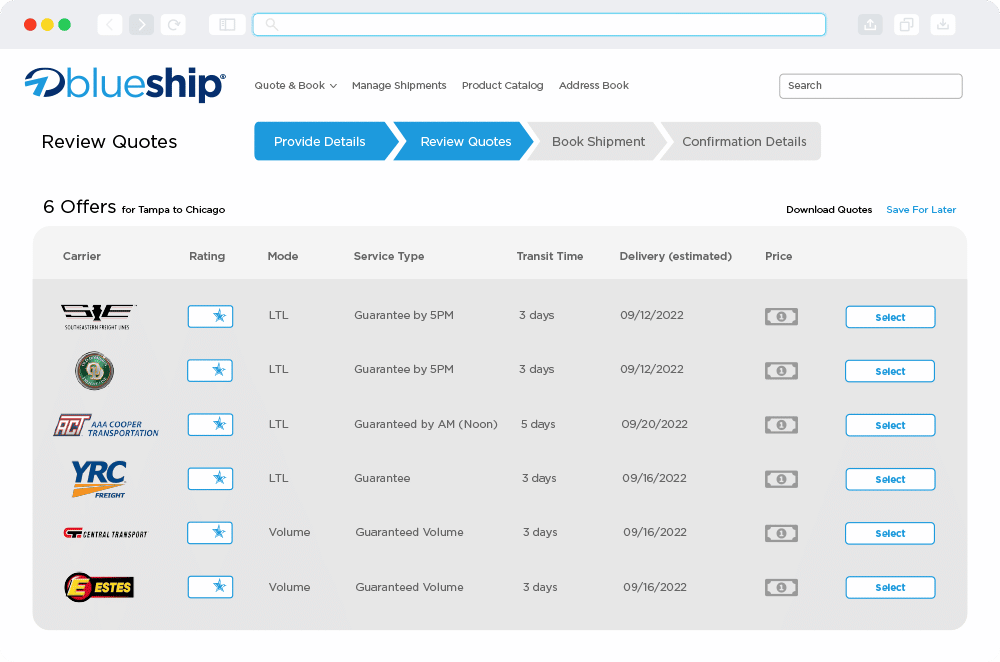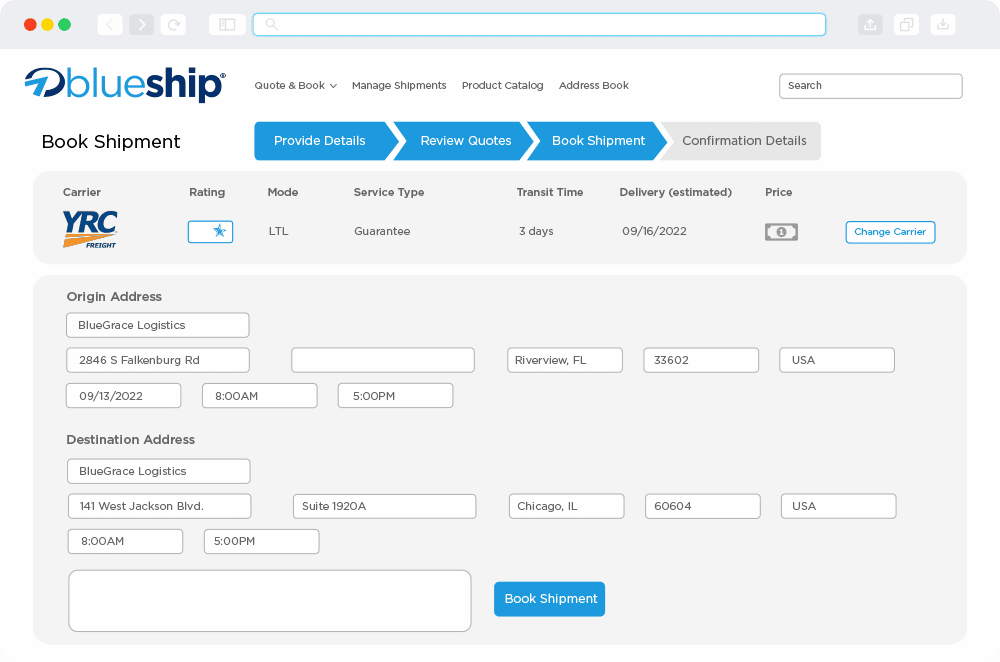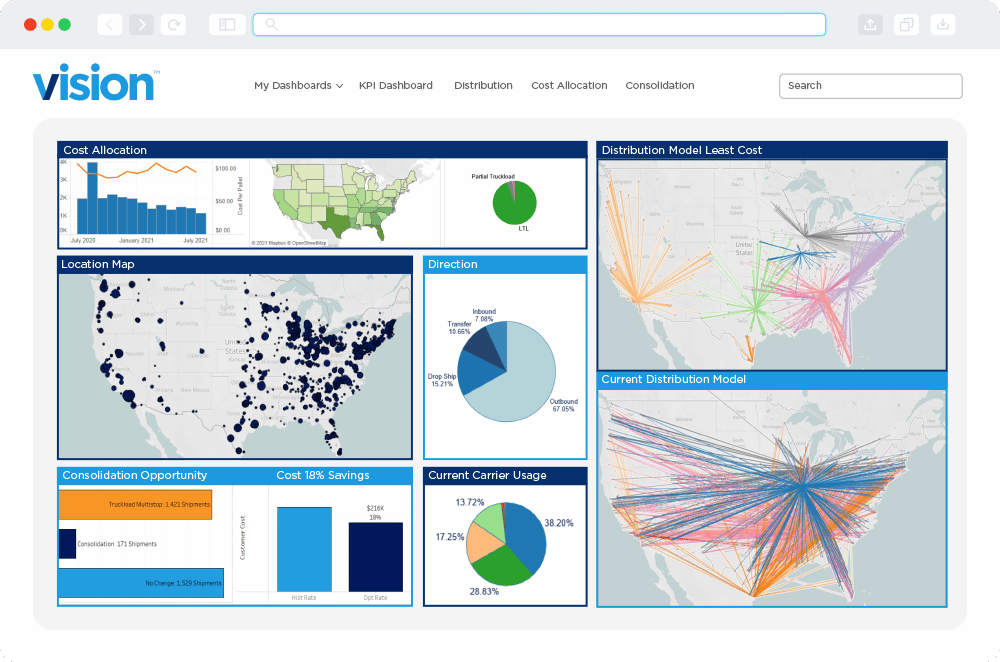
What are NMFC Codes and How Do They Differ from LTL Freight Class?

When it comes to shipping goods, understanding various terminologies and classification systems is essential. Two key elements in the shipping industry are NMFC codes and LTL freight class. While they may appear similar at first glance, there are distinct differences between them.
NMFC codes, or National Motor Freight Classification codes, are a standardized classification system used in the transportation industry, specifically for goods that carriers transport. Each code refers to various commodities that reflect the product’s transportation characteristics. LTL freight class, on the other hand, focuses on the pricing and handling requirements of those shipments. It provides a standardized method for categorizing those goods and determining the correct shipping cost.
Here’s a look into the difference between these two classifications and their key roles in the shipping industry.
Download The LTL Toolkit to Unlock Exclusive Savings!
Understanding NMFC Codes
NMFC codes are an important part of freight shipping, serving as a classification system for various goods. An NMFC code is a unique number assigned to each item, providing detailed information about its characteristics, such as density, handling requirements, packaging specifications and liability. In more detail:
- Density: The NMFC groups commodities into different density ranges, such as pounds per cubic foot (PCF), to determine their handling and pricing. Items with higher densities may require special handling or occupy more space, impacting their shipping rates.
- Stowability: The stowability of a commodity relies on its storage or loading capabilities within a vehicle. The NMFC considers whether an item is easily stackable, requires special packaging or handling, or has specific requirements for secure transportation.
- Handling Characteristics: The NMFC looks at the characteristics of commodities that may affect their transportation, such as fragility, hazardous nature, or susceptibility to damage.
- Liability: Liability refers to the responsibility and potential risk associated with the transportation of a commodity. Commodity liability classifications can range from low to high, impacting the carrier’s responsibility and liability limits in case of incidents.
These codes ensure that the shipping company transports the item safely and securely by utilizing appropriate packaging and handling techniques. The classification also helps to determine proper and consistent pricing for the shipped item, as high-density or hazardous items typically incur additional fees.
Differences Between NMFC Codes and Freight Class
Another essential element in freight shipping is LTL (less-than-truckload) freight class. The LTL freight class system organizes each commodity into specific categories, and shipping companies calculate shipping costs based on these assigned categories. LTL shipments do not require a full truckload but occupy only a portion of the available space on a truck.
NMFC codes categorize the commodity being shipped, and based on the variables within an NMFC code, determines the corresponding class. Freight classes range from 50 to 500, with class 50 designated as the least expensive and 500 as the most expensive. The NMFC codes classify specific goods that fall under each freight class.
Since freight class and NMFC codes are closely related, the criteria used to determine a good’s freight class are the same as those used to assess its NMFC code. The key difference, however, lies in their usage. While LTL freight classes are mainly used for pricing and shipping rate calculations, NMFC codes are also used for contract negotiations and data management.
Importance of Accurate Code Classification
Assigning the correct NMFC code ensures accurate pricing based on the specific characteristics of the goods being shipped. It enables carriers to establish fair and consistent pricing structures based on a shipper’s expected commodity’s characteristics, and ensuring their price is appropriate for the transportation of the commodity within their network. Correct pricing also promotes transparency and helps prevent disputes related to shipping costs.
The NMFC code also provides guidelines and instructions for the proper handling and packaging of commodities. By accurately determining the code, carriers and logistics providers can ensure that they handle the goods correctly and package them appropriately. Following the guidelines associated with the NMFC code helps prevent damage, minimize the risk of accidents during transit, and promote the safe transportation of goods.
Example: NMFC Codes and Freight Class In Action
Here’s an example of NMFC codes and LTL freight class in a real-life application:
Let’s say you are a tile distributor and need to ship a pallet of ceramic tiles. Here’s how each comes into play:
- NMFC Code: Ceramic tiles fall under a specific NMFC code category. Let’s assume the NMFC code for ceramic tiles is 182570.
- LTL Freight Class Determination: When determining the freight class for your shipment, you consider various factors such as density, stowability, handling, and liability.
- Density: Calculate the density of the shipment by dividing the weight of the pallet by the cubic footage it occupies. For instance, if the pallet weighs 1,000 pounds and occupies 50 cubic feet, the density is 20 pounds per cubic foot.
- Stowability: Ceramic tiles are typically packaged in sturdy boxes and are stackable, making them easily stowable.
- Handling: Although ceramic tiles are generally durable, they require careful handling to prevent breakage and ensure safe transportation.
- Liability: The liability associated with shipping ceramic tiles is moderate due to the risk of breakage.
Based on these factors, the carrier or shipping company would assign a freight class to your shipment. Let’s say they determine it to be Class 60.
- Freight Charges: Each class has an associated rate per hundred pounds (CWT). Carriers use this rate to calculate the shipping charges. Assuming the rate for Class 60 is $8 per CWT, and the total weight of the shipment is 1,000 pounds, the freight charges for your ceramic tile shipment would be $80 (1,000 pounds * $8 / 100).
In this example, the NMFC code for ceramic tiles (182570) helps identify the specific category, while the freight class (Class 60) indicates the pricing and handling requirements for the shipment. The assigned freight class determines the shipping cost and guides the carrier in handling and transporting the ceramic tiles securely.
It’s important to note that actual NMFC codes and LTL freight classes may vary depending on the specific type of ceramic tiles, packaging, carrier policies, and industry standards.
Best Practices for Utilizing NMFC Codes
Determining and applying NMFC codes accurately requires careful consideration of the characteristics of the commodities being shipped. To make informed decisions, you must familiarize yourself with the classification system and understand how key factors impact the classification of goods. Another way to correctly determine the code is to physically evaluate the transported commodity.
Reviewing the NMFC code book or consulting the NMFC online database is also helpful, as it contains comprehensive information on commodity classifications. Utilizing a density or freight class calculator could save you time and help you accurately determine a commodity’s freight class.
Communication is also essential when it comes to code classification. Working with carriers or freight brokers can give you valuable insights into the best ways to classify commodities and get accurate pricing information for shipped goods. They may also have access to additional resources or tools that can aid in determining the correct NMFC code.
Key Takeaways
Determining the appropriate NMFC code is important for various reasons, including accurate pricing, appropriate shipment handling, and quality delivery. There are several tools and resources conveniently located online to help with precise NMFC or freight class categorization.
The differentiation between freight class and NMFC codes allows for clear and consistent communication within the logistics industry. Freight class and NMFC codes also play a role in determining liability for goods, allowing shippers to protect their merchandise during transit.
Accurate NMFC code classification is essential for efficient and safe transport and delivery of goods. By following best practices, you can ensure the correct category of your commodities and how they should ship within an LTL network, avoiding potential issues, damages or delays during transit. Optimize your shipping process and use NMFC codes to get the most out of your logistics operations.
Related Posts
Managing the Realities of the “New Normal” LTL Shipping Environment
Managing the Realities of the “New Normal” LTL Shipping Environment
Read The Logistics Blog®
The Power Of Using A TMS For Any Size LTL Shipper
The Power Of Using A TMS For Any Size LTL Shipper
View The Logistics Blog®
LTL Shipping: 10 Common Mistakes and How to Avoid Them
LTL Shipping: 10 Common Mistakes and How to Avoid Them
View The Logistics Blog®






